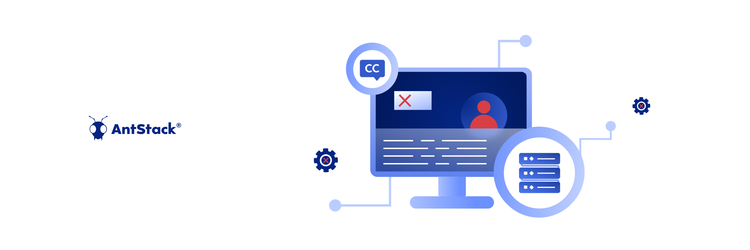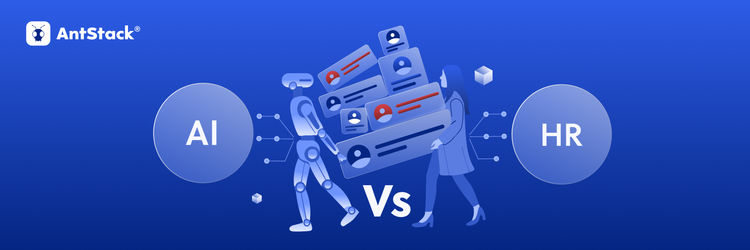From Metadata to Monetization: Building Real-Time Pipelines with Serverless AI
Applications of machine learning serve as an artificial intelligence component that enables computers to obtain knowledge from data inputs without programming direction. The computing system employs ML to perform pattern recognition, which enables it to autonomously make independent decisions.
ML often provokes mistaken assumptions regarding its role in automation tasks since its capabilities extend far beyond automation. The technology permits systems to learn independently from data while delivering improved performances coupled with accurate predictions that benefit both utility users researchers and businesses alike.
Why Do We Use Machine Learning?
Traditional programming requires that developers have to code for all reachable situations, which poses problems when programming dynamic systems. The method comes with its set of restrictions concerning the complex and variable nature of the data to be processed. It requires frequent updates and modifications. The way machine learning functions learn from experiences and self-improve over time, it is an ideal fit for tasks that would not require ongoing intervention by humans. Through the means of machine learning, computers will become more adept at analyzing new information with the aid of patterns, which will reduce the need for human-operated adjustments. The flexibility of ML is a great fit for tasks including speech recognition, recommendation systems, and predictive analytics.
The following reasons explain why ML has become prevalent for various applications:
- Automating Repetitive Tasks: The automated process enables businesses to operate more efficiently by having additional time from saved resources.
- Large Data Volumes: The processing power of ML far exceeds human limitations by analyzing huge data sets and producing meaningful outcomes with speed. It benefits businesses by detecting trends in problems and taking necessary actions based on data analytics information.
- Improving Decision-Making: Organizations can achieve precise and knowledgeable decisions with data-driven insights. ML analysis of trends identifies patterns that lead to forecasting outcomes and maximizing strategy performance.
- Personalization: ML offers an ability to tailor content delivery, promotional material, or product recommendations that will further create a more engaging experience by leveraging independent preferences.
- Advancing Research and Innovation: The advancement of modern research and innovative engineering happens through ML by creating groundbreaking systems that previously seemed impossible. ML speeds up modern scientific research connected to innovative ways to tackle evil real-life issues.
Key Concepts in Machine Learning
Before exploring machine learning types, we need to grasp that ML works by training models to find patterns in data that produce predictions. Machine learning models utilize diverse learning algorithms that produce three main model categories, namely supervised learning and unsupervised learning together with reinforcement learning.
Supervised learning:
A supervised learning approach enables predictive models to acquire knowledge by analyzing data that includes proper labels for each input. The presence of accurate answers with every dataset input enables the learning process through which the model detects patterns and creates predictions. The model performs better through predictive answer validation that guides its adjustment for optimal error reduction. The successful operation requires the system to predict accurately when presented with novel data that has not been encountered before.
An example is teaching a child to recognize fruits. When you teach a child to identify different types of fruits, showing them pictures together with their names, it helps to enhance the child's ability to learn the difference between apple and banana. This information enables the child to tell, upon seeing a new object, whether the new item is more similar to the apple or the banana type.
One of those key ideas in supervised learning is learning from examples. The model needs to see multiple examples while being provided with their corresponding correct responses. For instance, the model needs images of cats and dogs along with their respective labels to successfully learn how to recognize the two animals. During its learning process, the model detects distinct features, which ultimately help it separate between cats with their pointed ears and dogs with their elongated snouts. After absorbing these patterns, the model demonstrates accuracy in classifying between new cat and dog images.

How Does Supervised Machine Learning Work?
In a supervised machine learning system, the models are trained using a set of data in which all inputs are completely defined along with expected outputs.
Here is how it works:
1. Training Data: The model is trained on a set of data that includes input features and proper output labels. For example, study hours could serve as input features and the test score as output.
2. Learning Phase: The model tries to find patterns in the training data set by looking for how input values relate to output values. By correcting itself, the model learns to make better predictions.
3. Testing and Improvement: After training, the model is tested on new data to see how well it performs. When necessary, the system has its parameters adjusted, during which time it is made sure to keep its accuracy intact, and outstanding performance is guaranteed even on unseen data.

Advantages of Supervised Learning
A supervised learning algorithm helps machine learning models to identify patterns, which enables them to create smart decisions from analyzed data. Some key benefits include:
- Accurate Prediction: The model produces accurate predictions through its learning ability that gains knowledge from labeled examples.
- Clear Input-Output Relationships: This model provides a reasonably good interpretation of the input-output relationships between the data and the results.
- Works in Many Fields: The model performs across multiple fields because it operates for image recognition tasks and speech recognition systems along with language processing applications.
- Performance Measurement: The models employ performance measurement systems to accurately estimate their performance in terms of both accuracy and precision.
Disadvantages of Supervised Learning:
While supervised learning has many benefits, it also has some challenges.
- Overfitting: The model might memorize training data instead of learning useful patterns, making it perform poorly on new data.
- Feature Selection: Choosing the right features (important details in data) is time-consuming and needs expert knowledge.
- Bias Issues: The model can produce inaccurate results when training data contains bias.
- Labeled Data Requirement: The system requires large volumes of labeled data to function effectively, yet acquiring this data proves costly along with being time-intensive.
Unsupervised Learning
Unsupervised learning is a branch of machine learning where the data used has no labels. It differs from supervised learning, where the model is trained with known answers, whereas unsupervised learning finds patterns and relationships in the data without any prior knowledge.
Unsupervised learning systems do not receive any kind of correct answers from which the model can learn.The system itself does the study of information, creating groupings of elements similar to each other and detecting hidden patterns without intervention from humans. This method works pretty well when large datasets are involved with very little knowledge of proper classification, so it gives the ability to the model to uncover certain relevant patterns present in the data.
Consider the following scenario: You have a basket full of various fruits, but you are unaware of their names. Without the requirement for labels, an unsupervised learning algorithm will automatically classify comparable fruits together based on their size, shape, and colour, such as all apples in one group, bananas in another, and so on.

How Does Unsupervised Machine Learning Work?
Unsupervised machine learning algorithms analyze datasets by finding patterns in data without labels. The system uses unlabeled data to organize matching data clusters during its processing independently. Data values are evaluated for similarities as well as dissimilarities within this method to complete the process.
Here’s how it works:
1. Input Data: The model is given raw, unlabeled data.
2. Pattern Finding: It attempts to find patterns, similarities, or differences in the data.
3. Grouping or Structuring: The model groups similar data points into clusters or identifies underlying patterns.
4. Results: The patterns can be utilized to make a decision, analyze a trend, or further data analysis.

Advantages of Unsupervised Learning:
- No Need for Labeled Data - Unsupervised learning algorithms can be used on raw forms of data, making it cost-effective and less time-consuming as labelling of the data is not required.
- Finds Hidden Patterns - It can find hidden patterns within data that humans may find difficult to notice.
- Efficient with Big Data - Best suited for big data and efficiently processes large volumes of data.
- Adjusts to New Data - The model will learn to adapt to new data patterns over time.
- Applied to Hard Problems - Employed in tasks such as customer segmentation, outlier detection, and recommendation systems.
Disadvantages of Unsupervised Learning:
- Results Can Be Vague - Because of the unlabelled dataset, the model output will not always be understandable.
- Difficult to Assess Accuracy - Unlike supervised learning, there is no right answer to compare with, so it is difficult to evaluate.
- May Identify Irrelevant Patterns - The model might label the data inaccurately or identify irrelevant patterns.
- Needs More Computation - Because it operates with a lot of data with no direction, it can be slower and more complex.
- Difficult to Control - The model might not always learn what you want without explicit human oversight.
Difference between Supervised and Unsupervised Learning
| Aspects | Supervised Learning | Unsupervised Learning |
| Input Data | Labelled Data is used | Unlabelled Data is used |
| Objective | Prediction or classification of data is done based on known labels | It helps to discover patterns or features of data without labels |
| Complexity | The complexity is less as the model learns from labelled data | The complexity is greater since the model has to find patterns without any clear guidance |
| Types | There are mainly two types - Classification and Regression | There are mainly two types - Clustering and Association |
| Example | Predicting students’ test score based on their study hours | Grouping customers based on their shopping habits |
What is Reinforcement Learning?
Reinforcement learning is a form of machine learning that enables an agent to select from a set of actions in a given environment to maximize its expected reward. It is a type of supervised learning where the agent interacts with the environment and receives a reinforcement signal, which tells the agent how good its actions are. This reinforcement signal could be a numerical value representing the amount of reward or punishment received by the agent.
The different elements or factors that are involved in the reinforcement learning are explained below:
- Agent: The one who is able to make decisions and perform actions.
- Environment: The context in which the agent is operating.
- State: The state or the condition of the agent at a particular time.
- Action: The choices that the agent can take.
- Reward/Penalty: The reinforcement signal that the agent gets from the environment depends on the actions taken by the agent.

How Reinforcement learning works?
The reinforcement learning process consists of an agent selecting actions within an environment, incurring rewards or penalties as a result, and updating its strategy. This loop enables the agent to learn how to make better decisions to achieve the highest possible reward in the long run.
Here’s a breakdown of RL components:
- Policy: Agent policy refers to selecting the next action based on the current state.
- Reward Function: A reward function informs the agent if the action taken was correct or wrong. It then makes the next choice in that direction to reach a goal.
- Value Function: A value function estimates the total future reward that will be received.
- Environment: The external system that provides the agent an idea of what the environment will look like next and what reward it will get.
Example of learning reinforcement: Navigate a maze
Imagine a maze-navigating robot reaching a diamond while avoiding the dangers of fire. Maximizing the target reward is to find the optimal path with minimal threats:
- Every time the robot runs correctly, it receives a reward.
- If the robot takes the wrong path, he loses the digit.
- The robot learns by searching for various paths in the maze.
- By trying various tricks, it evaluates prizes and punishments for each path.
- Over time, the robot determines the best route by selecting tasks that lead to the highest cumulative award.

Applications of Reinforcement Learning
- Robotics: RL is used to automate tasks in a structured environment such as manufacturing, where robots learn to adapt moves and improve efficiency.
- Game Playing: Advanced RL algorithms have been used to develop strategies for complex games such as video games, in many examples better for human players.
- Industrial Control: RL helps in the adaptation of real-time adjustment and industrial operations, such as refined procedures in the oil and gas industry.
- Personalized Training System: RL enables adaptation of instructional material based on a person's learning pattern and improves engagement and effectiveness.
Advantages of Reinforcement Learning:
- Learns from experience - The model improves over time by interacting with the environment and receiving feedback.
- Handles complex problems - Suitable for tasks such as robotics, gaming, and self-driving cars where predetermined rules are inadequate.
- Adaptability - Can adjust to the dynamic environment without the requirement of labeled data.
- Maximizes long-term awards - Focuses on customizing future consequences rather than immediate results.
- Automates decision-making - Helps in autonomous systems where human intervention is impractical.
Disadvantages of Reinforcement Learning:
- Requires Large Amounts of Data - Needs extensive interactions with the environment to learn effectively.
- Computationally Expensive - Training models can be resource-intensive and time-consuming.
- Unpredictable Behavior - The agent may explore inefficient or harmful strategies before finding optimal ones.
- Difficult to Implement - Requires careful tuning of reward functions to avoid unintended behaviors.
- Not Always Generalizable - A model trained in an environment cannot perform well in different settings.
Limitations of Machine Learning
While machine learning has transformed various industries, it also has several limitations that impact its effectiveness and applicability.
- Data Dependency: The accurate performance of ML models depends on accessing and using large quantities of high-quality data collections. Results based on poor or inadequate data usually produce unreliable and biased outcomes.
- Lack of Explainability: Many machine learning models, especially deep learning, act as "black boxes," that make thier decisions difficult to understand.
- High Computational Cost: Training complex machine learning models usually demands extremely powerful hardware and specific computational resources, which are quite costly.
- Generalization Issues: Some machine learning models may do exceptionally well on training data but fail to predict new, unseen data accurately, resulting in overfitting.
- Ethical and Bias Concerns: As machine learning models learn from historical data, the model is likely to inherit any biases that exist within the training data, resulting in unfair or even discriminatory decisions.
Conclusion
Through machine learning models have undergone a fundamental transformation that lets them discover knowledge from past experiences along with pattern recognition and smart decision making without explicit programming. Across various industries, ML demonstrates its functionality through supervised learning, unsupervised learning and reinforcement learning categories.
Supervised learning systems use labeled data for predictions, whereas unsupervised learning models discover patterns from unlabeled information. Agents under reinforcement learning improve their performance through trial-and-error decision-making processes, which lead to optimal decision outcomes. These approaches demonstrate unique advantages and limitations when used for various applications in the field.
With the evolution of machine learning comes an infusion of creativity in AI-based solutions that enhance efficiency while transforming other industries. A good grasp of the fundamental principles of machine learning can enable using the potential for overcoming real-world dilemmas and impact the advancement of technology.











